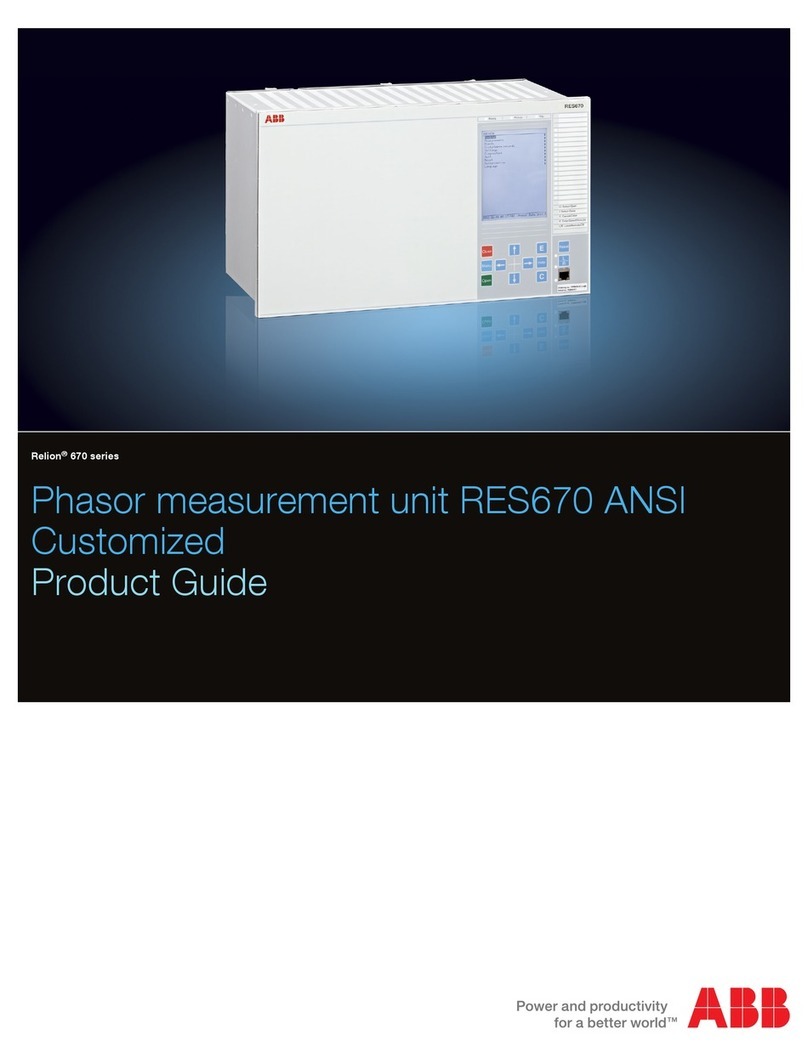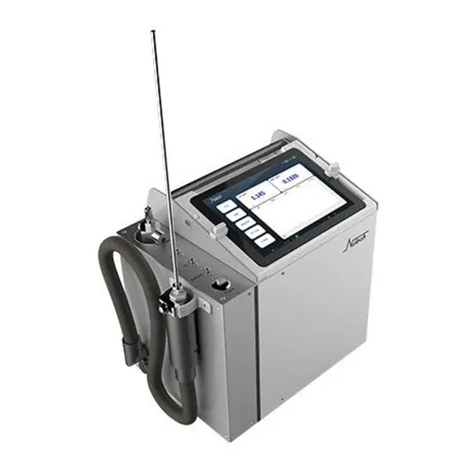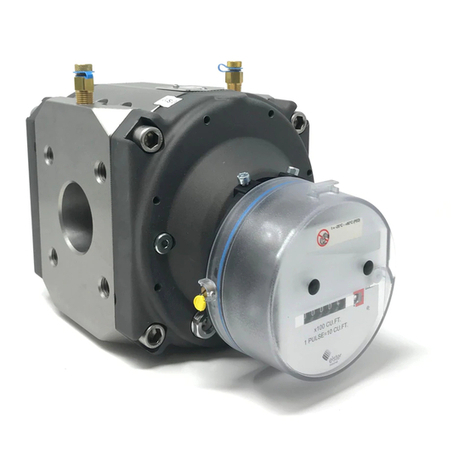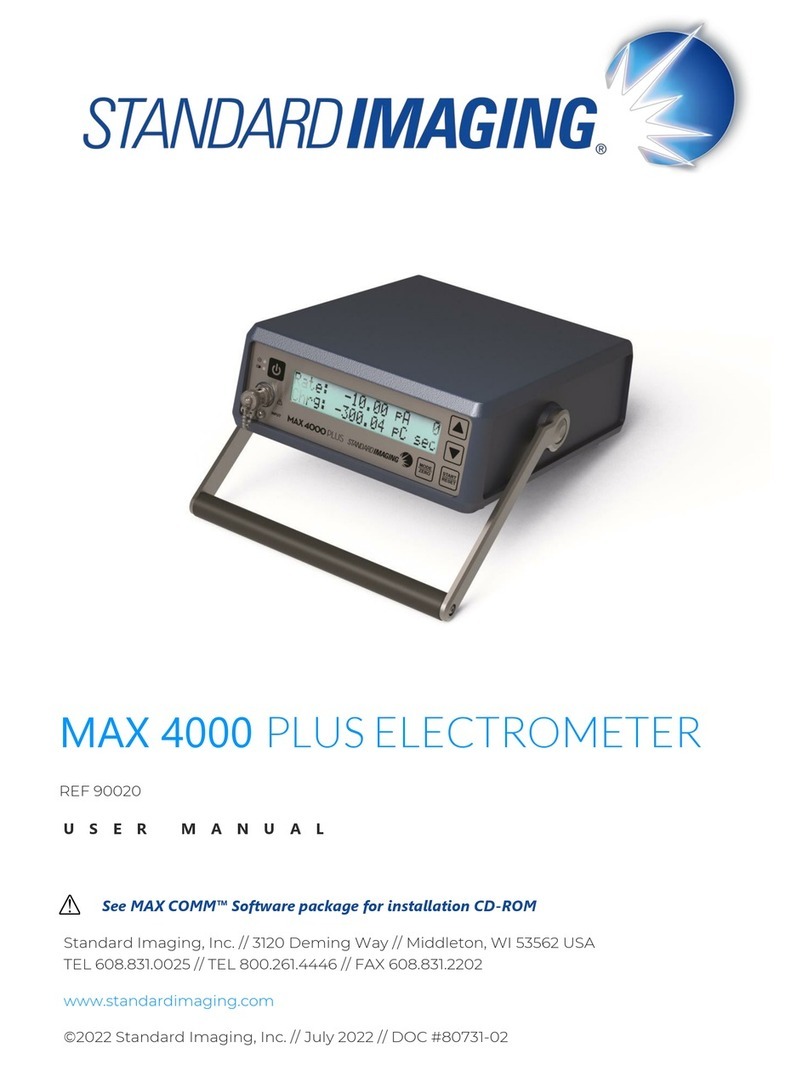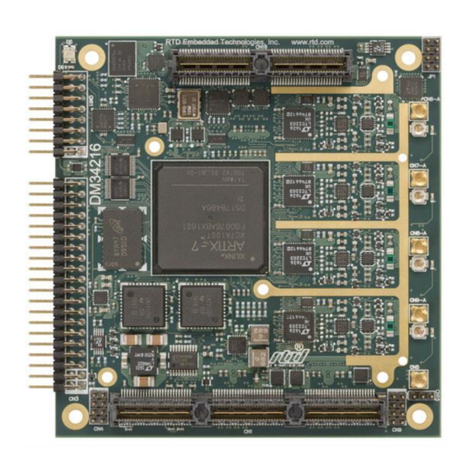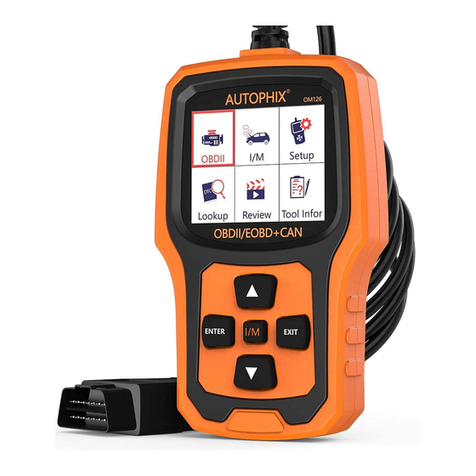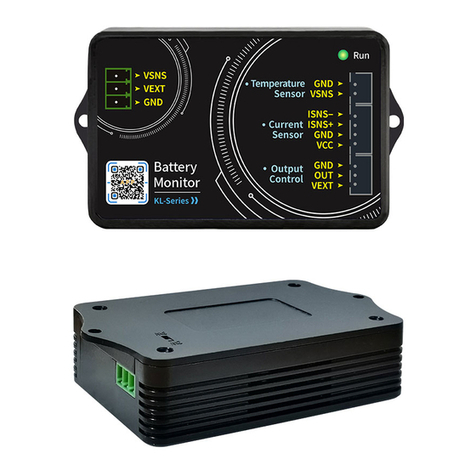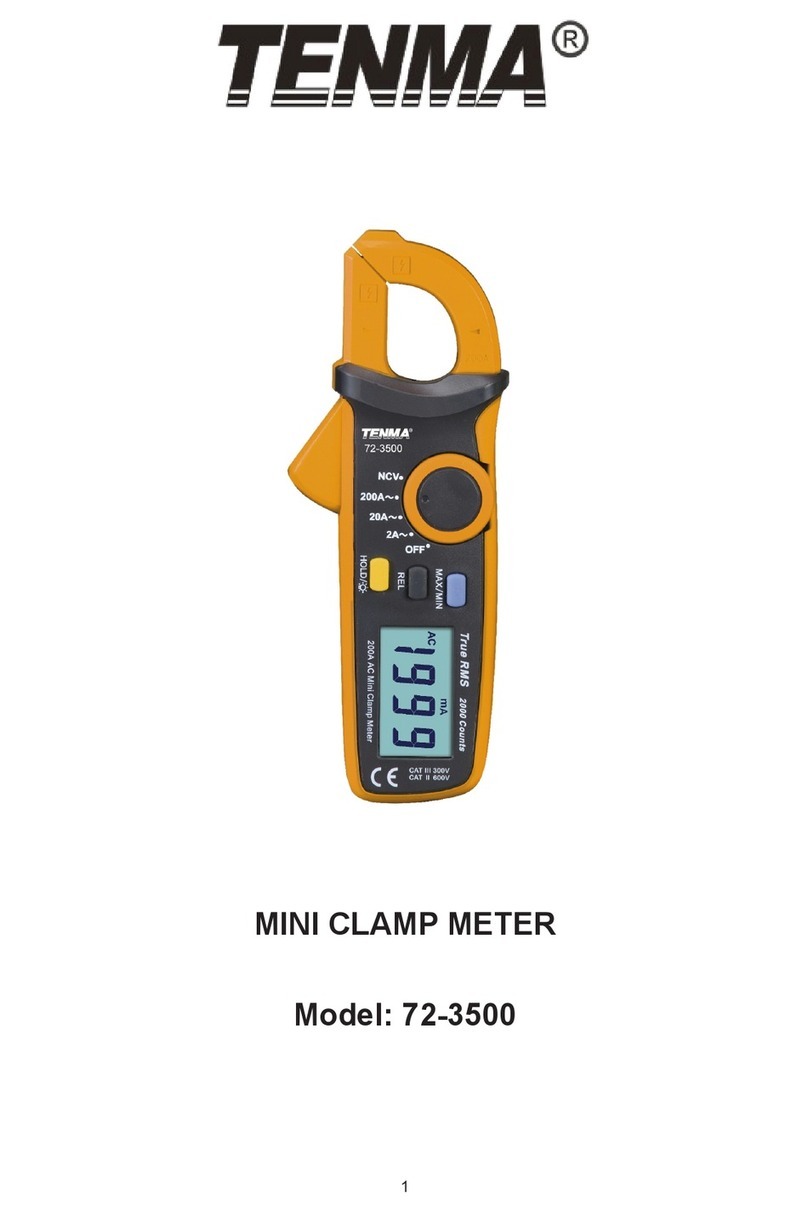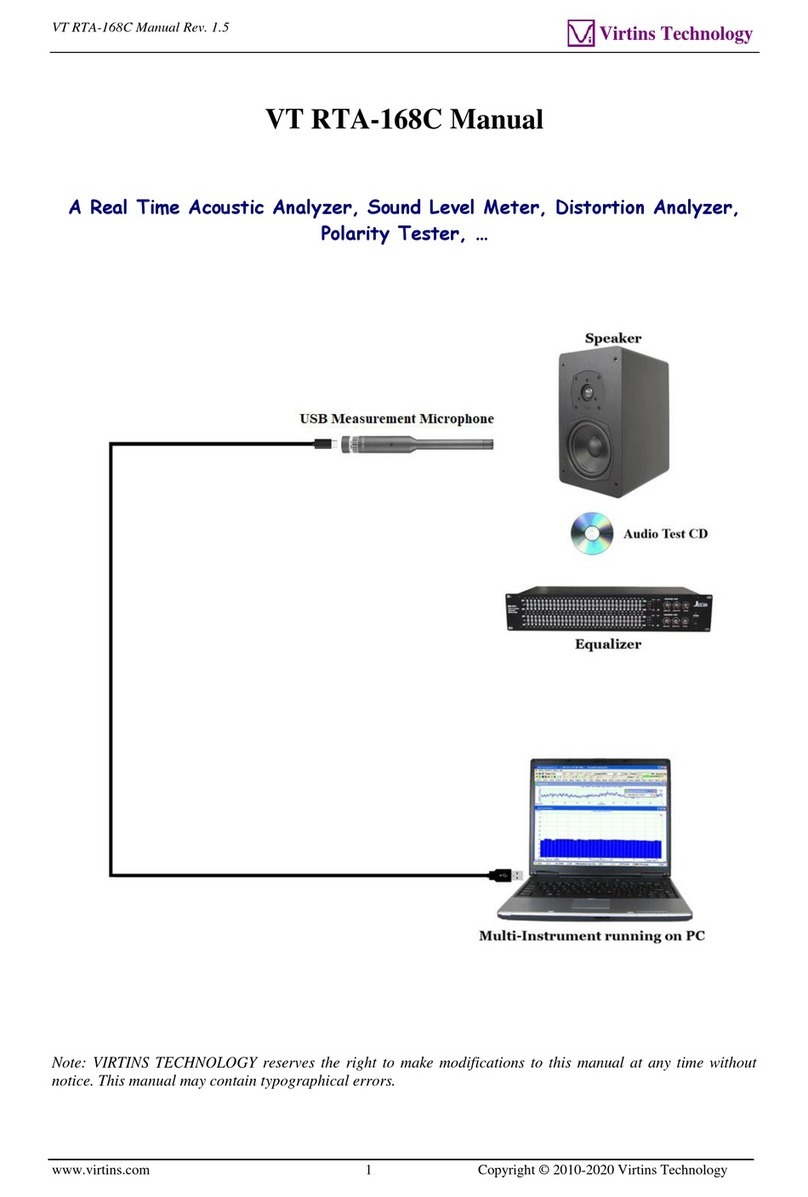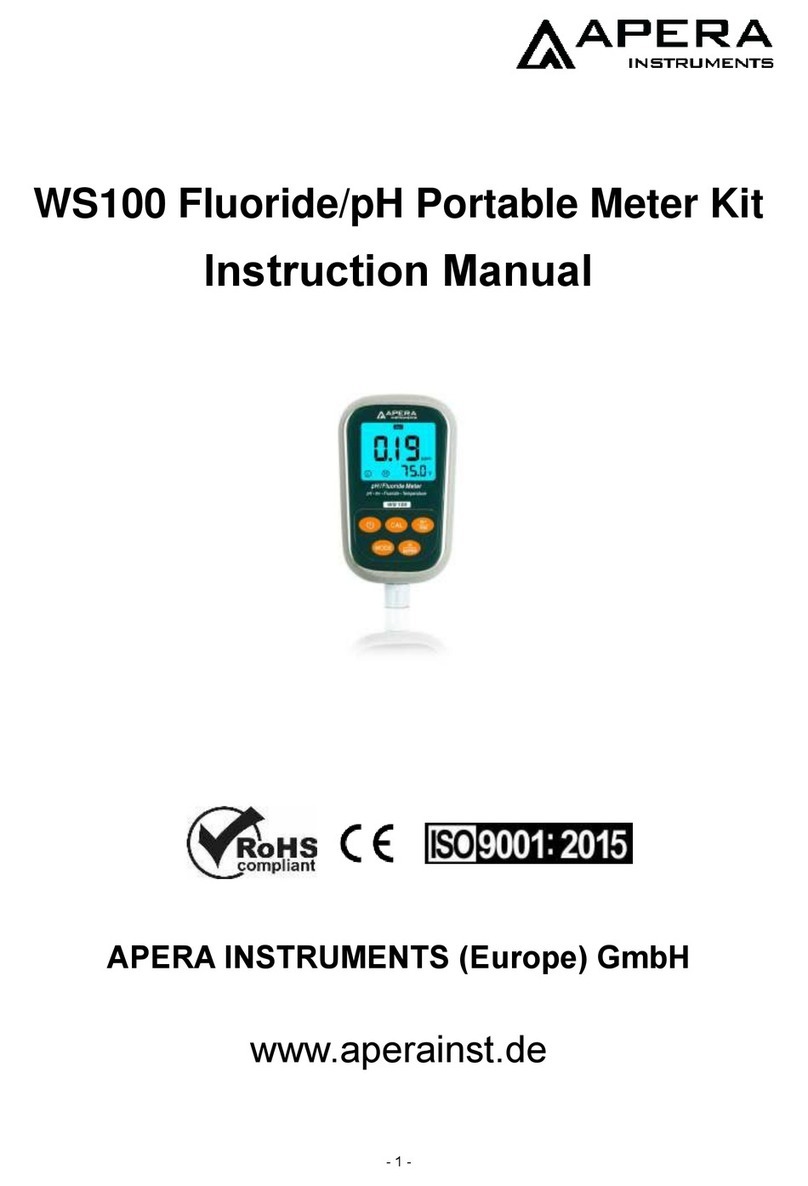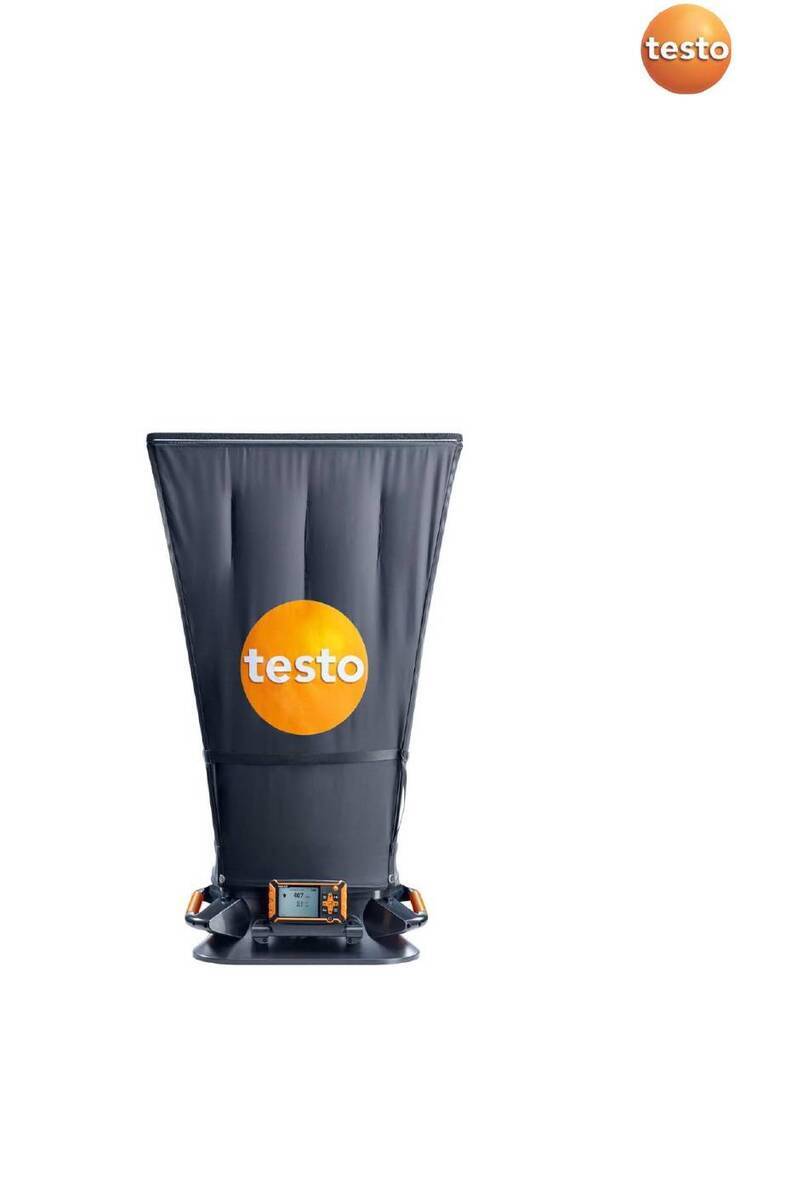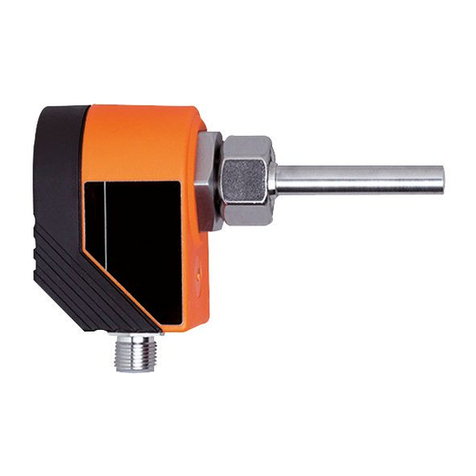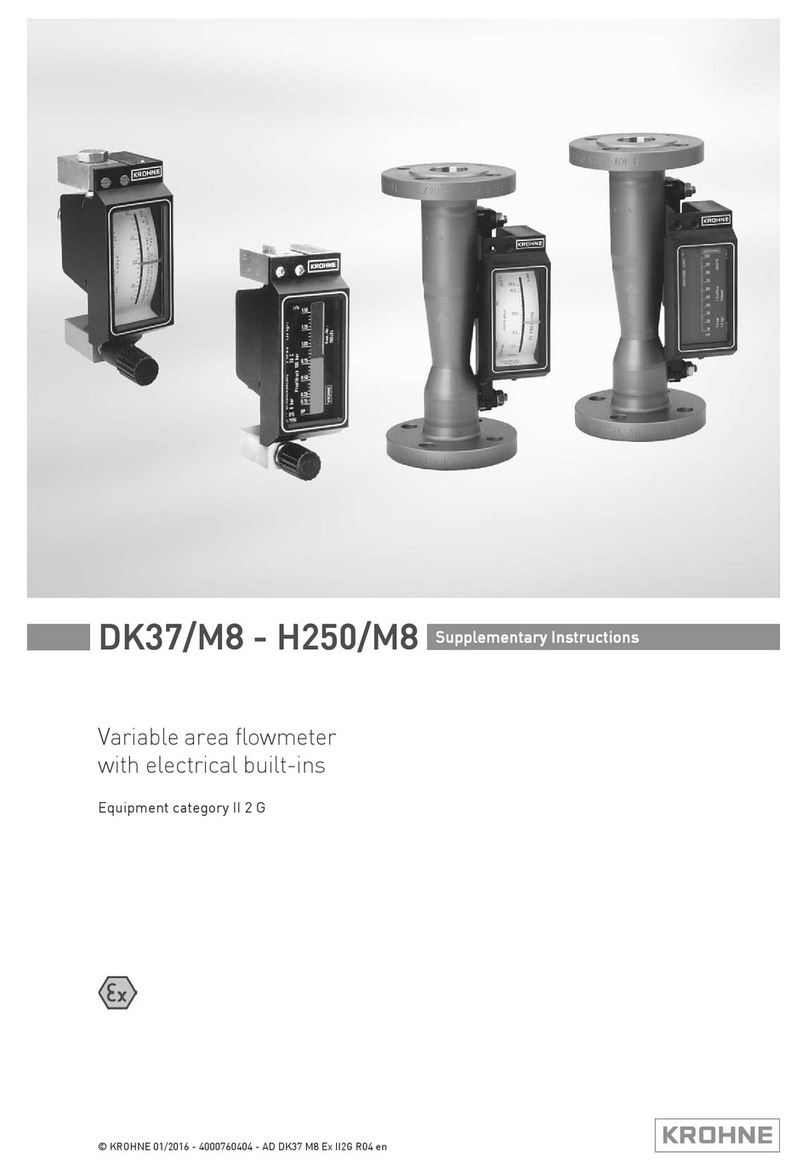Great Plains Industries, Inc. FM-300H User manual

Rev. A 920679-06
5252 East 36th Street North
Wichita, KS USA 67220-3205
TEL: 316-686-7361
FAX: 316-686-6746
“A Great Plains Ventures Subsidiary”
www.gpi.net
1-800-835-0113
FM-300H and
FM-300HR
Electronic Disc Meter Owner’s Manual
09/05

GENERAL INFORMATION
General Information ............................ 2
Before Installation ............................... 3
Installation ........................................... 3
Before Each Use ................................. 3
Operations .......................................... 4
Calibration ........................................... 5
Maintenance ....................................... 9
Troubleshooting ................................ 12
Illustrated Parts List .......................... 14
Specifications ................................... 15
Service .............................................. 15
TABLE OF CONTENTS
This manual assists you in operating and
maintaining your meter. Please take a
few moments to acquaint yourself with
the information here.
Ifyouneedassistance,contactthedealer
from whom you purchased your meter.
If You Measure in Litres
This manual commonly refers to “gal-
lons.” If your meter is factory calibrated in
litres, consider all references to “gallons”
apply equally to “litres.”
This symbol is used throughout
the manual to call your atten-
tion to safety messages.
Warnings alert you to the potential for
personal injury.
Cautions call your attention to practices
orprocedureswhichmaycausedam-
age to your equipment.
Notes give you information that can im-
prove efficiency of operations.
It is your responsibility to:
•make sure all operators have access
to adequate instructions about safe
operating and maintenance proce-
dures.
•know and follow all safety precau-
tions as specified by your chemical
manufacturer for handling of the fluid
being metered.
Read Me!
For your safety, review the major warn-
ings and cautions below before operat-
ing your meter.
1. This meter is approved to handle
water,pesticides,fertilizers,andmost
industrial fluids. Do not use for gaso-
line, diesel, or other fluids. Do not use
this meter with flammable liquids.
To the owner…
Congratulations on receiving your GPI
Electronic Disc Meter. We are pleased to
provide you with a meter designed to
give you maximum reliability and
efficiency.
Our business is the design manufacture,
and marketing of liquid handling,
agricultural, and recreational products.
We succeed because we provide
customers with innovative, reliable, safe,
timely, and competitively-priced
products. We pride ourselves in
conducting our business with integrity
and professionalism.
Weareproudtoprovide you with a quality
product and the support you need to
obtain years of safe, dependable service.
President
Great Plains Industries, Inc.
2

3
2. Whenhandlinghazardouschemicals,
always follow the chemical manu-
facturer’s safety precautions. Wear
protective clothing such as goggles,
gloves,andrespirators,asinstructed.
3. To avoid damage, DO NOT blow
compressed air through the meter.
Your electronic disc meter is designed
for measuring a wide range of chemicals.
The meter translates flow data from the
nutator disc into calibrated units shown
on the meter’s readout. A field replace-
able battery provides power.
Upon receipt, examine your meter for
visibledamage.Removeprotectiveplugs
and caps for a thorough inspection. If
any items are damaged or missing, con-
tact your distributor.
CAUTION: To avoid damage, DO NOT
blow compressed air through the
meter.
Connect Battery
To save power, this meter is shipped with
the battery disconnected. Before using,
connect the battery using the instruc-
tions below:
1. Remove the two large and two small
screws from the battery coverplate
located on the lower portion of the
meter face.
2. Remove the battery and plug into
battery connections. When con-
nected properly, numbers appear in
the meter readout.
3. Replace the gasket and battery
cover and tighten securely. Torque
the screws to 9 to 10 in. lbs.
BEFORE INSTALLATION
INSTALLATION
NOTE: To avoid damage to the inlet and
outlet, install this meter ONLY on
plastic hose end or pipe fittings.
1. To protect against leakage, seal all
threads with two or three turns of
Teflon®tape or a pipe thread seal-
ant compatible with the liquid being
measured. Make sure the Teflon®
tape or sealant does not interfere
with flow.
2. Hand-tighten the meter onto the fit-
tings until snug. (Figure 1)
Figure 1
CAUTION: To avoid damage to the
housing, do not use a wrench.
If the meter has been used before, make
sure it is flushed and cleaned as outlined
in the Maintenance Section.
Press and release the DISPLAY button
to ensure the meter is operating. Num-
bers will display from the last use.
If the display is dim or fading, replace the
battery using instructions in the Mainte-
nance Section. Also check battery ter-
minals for corrosion. To prevent corro-
sion from condensation, coat the termi-
nals with petroleum jelly.
BEFORE EACH USE

4
Verify Meter Accuracy
Beforeusing,verify calibration and check
the meter’s accuracy.
1. If desired, hold down DISPLAY for
three seconds to zero the meter’s
Batch Total. When zeros appear, re-
lease the button.
2. Meter an exact known volume into
an accurate container. For best re-
sults, meter with one continuous full
stream.
3. Check the readout. If the amount
metered is accurate, field calibration
is not needed. If not, refer to the
Calibration Section for further in-
structions.
NOTE: Best performance can be ob-
tained by using the factory calibra-
tion.
All meter operations are reflected in the
readout on the face of the meter.
The readout contains three lines of infor-
mation. They are generally defined as
follows:
•The top line indicates the calibra-
tion curve.
•The middle line reflects flow infor-
mation.
•The bottom line shows information
from the totalizer.
The words or “flags” that display on the
top and bottom line further identify spe-
cific information.
OPERATIONS
! ! ! WARNING ! ! !
This meter is approved to handle
water, pesticides, fertilizers, and
most industrial fluids. Do not use for
gasoline, diesel, or other fuels. Do
not use this meter with flammable
liquids.
Turn On
The meter is on when any display is
present. It turns on automatically when
liquid flows through the meter. It can be
turned on manually by pressing and re-
leasing the DISPLAY button.
Turn Off
Whenever no flow has been sensed for
one minute, the unit automatically
switchestoapower-saving“sleep”mode
with a blank display. The unit will auto-
matically “wake up” the moment any
flow is sensed and will remain awake as
long as fluid is flowing. Totals are never
lost during sleep periods.
Batch and Cumulative Totals
Total flags are displayed on the bottom
line. The Cumulative Total is the total of
all fluid measured since the meter’s
power was connected.
NOTE: At your first use, the Cumulative
Total may not read zero because of
calibration at the factory.
The Batch Total (labeled TOTAL 2) indi-
cates flow during a single use. (Figure 2)
Clearing a Totalizer
The Batch totalizer register (TOTAL 2)
may be independently cleared to 0.00 at
any time. To clear a Batch totalizer, with
the desired totalizer displayed, press
and hold the DISPLAY button. At about
3 seconds, the displayed total will be
cleared to “0.00”. You can do this even
while fluid is flowing, in which case,
counting will resume after you release
the DISPLAY button.
Figure 2

5
CALIBRATION
The Cumulative totalizer register is la-
beled as TOTAL 1 LOCKED indicating
that it cannot be manually zeroed (Fig-
ure3). The Cumulative totalizeris cleared
only when the batteries are removed or
go dead or when the Cumulative Total
reaches the maximum value of 999,999.
Figure 3
Changing Display Registers
During normal operation, to change to
another totalizer register or to FLOW-
RATE mode, watch the bottom line dis-
play flags while you briefly press and
release the DISPLAY button. With each
operation, the mode will advance as
follows: TOTAL 1 LOCKED (Cumulative
Total), TOTAL 2 (Batch Total), FLOW-
RATE, TOTAL 1 LOCKED (etc.). You can
change registers at any time, even dur-
ing flow. Non-visible totalizer registers
will continue to accumulate.
NOTE: Generally, display registers
change when the buttons are re-
leased. Also, not all models include
the FLOWRATE mode.
Factory and Field Calibration
Curves
GPI flow computers have enhanced cali-
bration features. All calibration informa-
tion is visible to the user as words in the
upper part of the display, above the
numeric digits. There are two types of
calibration curves: Factory Calibration
and Field Calibration.
Factory Calibration curves are “preset”
by the manufacturer and stored perma-
nently in the computer’s memory. Fac-
tory calibration curves always display
PRESET on the top line of the readout
(refer to Figure 2). Factory Calibration is
either in gallons or litres.
A Field Calibration curve is set by the
user. The field calibration curve may be
changed or modified at any time using
the calibration procedure described in
this Section. Totals or flowrate derived
from the field calibration are visible when
the field calibration setting is selected.
All units are configured with two Factory
Calibration curves and one Field Cali-
bration curve:
•Factory Calibration curve for thin
viscosity liquids (GAL or LTR PRE-
SET is displayed).
•Factory Calibration curve for me-
dium to thick viscosity fluids (CAL
B PRESET is displayed).
•Field Calibration curve (CAL C is
displayed).

6
Selecting a Different
Calibration Setting
To select a different calibration setting,
first press and hold the CALIBRATE but-
ton. Continue to hold it while also briefly
pressing and releasing the DISPLAY
button. (You may then also release the
CALIBRATE button.) The flag indicators
in the upper area of the display will
change to show the newly selected cali-
bration setting. Calibration settings
change in this order: GAL or LTR, CAL B,
CAL C (etc.). While fluid is flowing, only
the GAL or LTR or CAL B selections may
be made, however, when NO fluid flow is
occurring, any setting may be selected.
Flowrate Mode
Some models include a Rate of Flow
feature (accessed by briefly pressing
and releasing the DISPLAY button as
described above). When this feature is
activated,the word FLOWRATE displays
to the left of the bottom line and the
numbers in the middle of the display
reflect the rate of flow (instead of total).
Most units are set to update the display
every 5 seconds, so the first reading
after flow starts or changes and the last
reading after flow stops or changes will
be correct. This is normal.
Propeller
A small propeller displays to indicate
liquid is flowing through the meter.
Field Calibration
Factory calibration settings are custom-
programmed into each flowmeter dur-
ing production, and are correct for light
fluids such as water or heavier liquids
likepesticides or light oil.However, read-
ings using the standard factory calibra-
tion curves may not be accurate in some
situations – variations in chemical for-
mulation, viscosity, temperature, and
flowrates all effect meter accuracy. To
ensure accuracy, it is important to check
accuracy frequently and field calibrate
when necessary.
Calibration Container
The desired calibration container should
beuniformly dependable andconstructed
with a graduated neck. The container’s
volume indicator should be clearly and
precisely marked. It is helpful if the
container’s material allows a window
through which the level of liquid can be
viewed. GPI offers a properly designed
calibration container for volumes of 5
gallons or 5 litres.
DO NOT use several smaller containers
or a larger container with a 5-gallon
marking.
For the most accurate results, dispense
at flowrates that best simulate your ac-
tual operating conditions. Avoid “drib-
bling” more fluid or repeatedly starting
and stopping the flow. These actions will
result in less accurate calibrations.
Up to 15 points can be field calibrated
on the field calibration curve. This multi-
point field calibration can improve accu-
racywhenoperatingcharacteristics(usu-
ally flowrate) are not uniform. For ex-
ample, if you plan to measure flowrate
that varies widely, a multi-point field
calibration at different flowrates can im-
prove accuracy.
During calibration, make sure you meet
the meter’s minimum flowrate require-
ments of 2 GPM (7 LPM).
Before calibrating, purge the system of
air using instructions in the Before Each
Use section.

7
Dispense-Display Field Calibration Procedure
Your Actions Notes
1. Hold down CALIBRATE while pressing and Remember that Field Calibra-
releasing DISPLAY until the Field Calibration tion curves are not preset.
curve appears (“CAL C” message will be
displayed). Release both buttons.
2. To calibrate, press and hold the CALIBRATE This step puts the unit in
button. While continuing to hold CALIBRATE, dispense-display field cali-
also press and hold the DISPLAY button. Hold bration mode (“dd CAL”).
both buttons for about 3 seconds until you see
a blinking “dd CAL” message. Once the
“dd CAL” message appears, release both
buttons. You are now in field calibration mode.
3. Once the buttons have been released from The computer is waiting for
Step 2, the display will show the blinking you to make a decision to
message “run 01.” either exit from field calibra-
tion mode or to begin a
dispense run. If you want to
exit the calibration now, go
to Step 11.
4. If you want to continue with the calibration,
but have not dispensed any fluid yet, make
your final preparations to your pumping
system, but don’t start pumping yet.
5. Start your pumping system so that fluid flows When the computer displays
through the meter. The display will stop a non-blinking “run 01” mes-
blinking. Dispense into a container that allows sage, it is sensing fluid flow.
you to judge the amount of fluid pumped. For accurate results, dispense
When you have pumped the desired amount at a flowrate which best simu-
(for example, 10 gallons), stop the fluid flow lates your actual operating
quickly. conditions. Avoid “dribbling”
(continued on next page)

8
Your Actions Notes
5. (continued) more fluid or repeatedly
starting and stopping the
flow - these actions will result
in less accurate calibrations.
6. Once the flow has stopped, briefly press and When the display shows
release both buttons. At this point the compu- “0000.00” the computer has
ter display will change to “0000.00” with the stopped “watching” for fluid
left-hand digit blinking. flow and is now waiting for
you to enter some numbers.
7. Enter the volume (amount) of fluid that you dis-
pensed (for example, if your 10-gallon container
is full, enter “10.0” for gallons or “37.85” for
litres). To enter numbers use the CALIBRATE
button to change the value of the digit that is
blinking and use the DISPLAY button to shift
the “blink” to the next digit.
8. Once the correct number has been entered, You have installed a new
briefly press and release both buttons. The dis- cal-curve point. You are
play will change to a blinking “run 02” message. ready to end calibration
(Step 10) or enter another
new calibration point (Step 9).
9. To enter another calibration point, go back It is possible to set up to 15
and repeat Steps 3 through 8. cal-curve points, and the
“run ##” message will incre-
ment each time you repeat
the calibration process
(run 01, run 02, run 03, etc.,
up to run 15).

9
Your Actions Notes
10.To end calibration, press and hold both buttons After you release the buttons,
for 3 seconds until you see “CAL End” message. the computer will resume
normal operations with the
new cal point(s) active.
11. If you HAVE NOT dispensed any fluid, you can After you release the buttons,
exit calibration without changing the cal curve. the computer will resume
If the message “run 01” is showing and you normal operations and the
have not dispensed any fluid, hold both old curve (if you have entered
buttons for about 3 seconds until you see a one in the past) is still intact.
“CAL End” message.
MAINTENANCE
This meter is virtually maintenance free.
It is important, however, that the nutator
disc moves freely.
To prevent drying of chemical on inter-
nal assemblies, meters should be kept
free of chemical when not in use for
extended periods of time. Flush and
clean after each use to promote trouble-
free operation.
Removal
1. Ensure all chemical is drained from
the meter. This could include drain-
ing the hose, meter, and nozzle.
2. Wearing protective clothing, loosen
the meter from fittings by hand.
CAUTION: To avoid damage to the
housing, do not use a wrench.
If the meter is not immediately installed
again, cap the hose end to prevent spills
and drying. The nozzle could be used for
this purpose. Flush the meter if it will not
be in use for more than two weeks.
Flushing
When removed or not in use for more
than two weeks, flush the meter to re-
move chemical residue.
CAUTION: Do not submerge the meter.
If needed, clean the meter using Clean-
ing instructions below.
! ! ! WARNING ! ! !
Duringmeterremoval,chemical may
spill. Follow the chemical manu-
facturer’s safety precautions for
cleanup of minor spills.

10
Cleaning
During use, the meter should be kept
free of liquid to ensure drying does not
occur inside the meter. If drying should
occur, the nutator will stick or drag,
affecting accuracy. If this occurs, clean-
ing is required.
Cleaning the Nutator
1. Loosen the screws on the back of
the meter about 1/4 inch (0.6 cm).
(Figure 4)
Figure 4
2. Tap the screws with a hammer to
loosen the coverplate from the hous-
ing. (Figure 5) Remove the screws
and washers.
Figure 5
3. Gently pry the coverplate from the
housing. Take care not to damage
the coverplate, housing, or O-ring.
(Figure 6)
Figure 6
4. Remove the signal generator from
the pin on the nutator disc.
(Figure 7)
Figure 7
5. Gently remove the metal clips hold-
ing the nutator in place. (Figure 8)
Take care not to damage the O-ring
on the nutator inlet.
Figure 8
6. Remove the nutator.
7. Using water or a solvent-based fluid
and a brush, carefully remove resi-
due from the nutator disc, nutator
halves, signal generator, and inside
of housing. Allow all parts to dry.

11
CAUTION: Do not submerge the meter.
8. When the nutator turns freely, as-
semble and install following the in-
structions below.
Assemble Nutator
1. Assemble the nutator disc and nuta-
tor halves. Install the O-ring on the
nutator inlet.
2. Install the nutator in the meter hous-
ing. Make sure the nutator O-ring fits
properly against the meter inlet.
3. Secure the nutator with the metal
clips. Beginning opposite the inlet,
install a clip in each slot in the hous-
ing. Push each clip down firmly un-
til seated.
4. Place the signal generator on the
nutator pin. Make sure it rotates
freely on the pin.
5. Coat the O-ring lightly with bearing
grease and seat securely on the
coverplate.
6. With the display facing up, turn the
coverplate to the desired orientation.
Align holes on coverplate and hous-
ing.
7. Secure the coverplate by evenly
tightening screws to 25 to 35 in. lbs.
Storage
After thoroughly cleaning the meter, dis-
connect the battery and store the meter
in a clean, dry location.
Battery Replacement
Your meter is equipped with a field-
replaceable 9-volt alkaline battery.
If the meter’s readout should become
dim or blank, replace the battery.
When the battery is disconnected or
fails, the Batch and Cumulative Totals
return to zero.
Factory and Field Calibrations are not
lost when the battery is replaced or
power is lost. They are saved in the
meter’s computer and are available after
a new battery is installed. You do not
need to repeat Field Calibration.
Check the battery and terminals at least
every year to ensure proper operation. It
is strongly recommended that terminals
be cleaned annually.
NOTE: The battery can be replaced
without removing the meter from the
hose or pipe.
To replace battery or clean terminals:
1. Remove the two large and two small
screws from the battery coverplate
located on the lower portion of the
meter face. (Figure 9)
Figure 9
2. Remove the battery coverplate and
gasket. (Figure 10)
Figure 10

12
3. Remove the battery and, if neces-
sary, clean corrosion from the bat-
tery terminals. (Figure 11) To prevent
corrosion from condensation, coat
the terminals with petroleum jelly.
Figure 11
4. Install the new battery.
When the battery is installed cor-
rectly, the computer powers on au-
tomatically. Check the readout to
make sure normal meter functions
have resumed before assembling
again. If necessary, seat the battery
again.
5. Make sure the coverplate gasket is
in good condition and properly seat-
ed. Replace, if needed.
6. Replace the battery cover. Torque
the screws to 9 to 10 in. lbs.
End of Season
To ensure proper operation, the meter
should be cleaned prior to extended
periods of inactivity and at the end of the
season before storage. Disconnect the
battery before storage.
TROUBLESHOOTING
SYMPTOM PROBABLE CAUSE CORRECTIVE ACTION
A. METER IS NOT 1. Field Calibration not Field calibrate again or select Factory
ACCURATE performed properly Calibration.
2. Factory Calibration not Perform a Field Calibration according
suitable for liquid being to Calibration Section.
measured
3. Meter operated below Increase flowrate. See Specifications
minimum flowrate Section.
4. Meter partially clogged Remove meter. Disassemble and care-
with dried liquid fully clean dried chemical from the
nutator. Make sure the nutating disc
moves freely. Assemble again.
5. Teflon®tape or other Remove meter. Clear material from flow
material in flow path path and seal fittings. Install again.
6. Nutator misaligned Disassemble meter and install nutator
again. Ensure O-ring and retainer clips
are in place.
B. READOUT 1. Batteries weak, dead Replace battery. Install again, making
FADED OR or not connected sure the gasket seats evenly around
BLANK the coverplate.
2. Battery terminal Clean corrosion from the terminals.
corroded
3. Computer defective Contact the factory.

13
C. NORMAL FLOW-
RATE BUT
METER DOES
NOT COUNT
(Meter comes on
when DISPLAY
button pushed.)
G. METER 1. Meter installed without Remove meter. Wrap male connections
CONNECTIONS thread sealant with 3 to 4 wraps of Teflon®tape or com-
LEAK patible sealing compound. Install again.
2. Connecting threads Remove meter and inspect threads. Re-
damaged place damaged connections. If threads
are damaged, contact the factory.
3. Screws on back of Tighten screws. Torque to 25 to 35 in.
meter loose lbs.
4. Coverplate O-ring Install O-ring on coverplate again.
missing, damaged, or
improperly installed
5. Meter housing Inspect housing for cracks. If cracks
cracked present, contact the factory.
SYMPTOM PROBABLE CAUSE CORRECTIVE ACTION
1. Field Calibration not Field calibrate again or select Factory
performed correctly Calibration.
2. Nutator misaligned Disassemble meter and install nutator
again. Ensure O-ring and retainer clips
are in place.
3. Signal generator disc Replace signal generator disc. Contact
missing or damaged the factory.
4. Computer defective Contact the factory.
D. REDUCED FLOW- 1. Meter clogged with Remove meter. Disassemble and clean
RATE & METER dried liquids dried chemical from the nutator. Make
DOES NOT sure the nutating disc moves freely.
COUNT (Meter Assemble again.
comes on when
DISPLAY button
pushed.)
E. CANNOT GET 1. Factory Calibration Hold down CALIBRATE and push and
METER INTO (PRESET) curve active release DISPLAY until PRESET flag
FIELD CALIBRA- goes off. Proceed using instructions in
TION the Calibration Section.
2. Button push sequence Make sure PRESET flag on readout is off.
incorrect Make sure CALIBRATE is held down
while DISPLAY is pushed. Hold both
buttons for 3 seconds. Readout will then
show dd-CAL. Release both buttons.
Proceed with calibration according to
Calibration Section.
3. Computer circuit Contact the factory.
board defective
F. COMPUTER 1. Flowrate too low Try again and increase flowrate to at
BLINKS “NO” least 2 GPM (7 LPM).
AFTER FIELD
CALIBRATION 2. Button push sequence Make sure PRESET flag on readout is off.
incorrect Make sure CALIBRATE is held down
while DISPLAY is pushed. Hold both
buttons for 3 seconds. Readout will then
show dd-CAL. Release both buttons.
Proceed with calibration according to
Calibration Section.

14
ILLUSTRATED PARTS LIST
Item No.
No. Part No. Description Req’d.
1120505-1 Housing Kit ........................ 1
1-A 904004-19 Screw, 1/4-20 x 1-3/4 in. ... 4
1-B 904005-29 Washer, 1/4 in. ................... 4
2120503-1 Nutator Kit .......................... 1
2-A 111045-4 Nutator O-ring .....................1
3120013-1 Clip ..................................... 4
4120504-1 Signal Generator Kit ........... 1
5* 120502-11 Coverplate Assy Kit, gallon 1
120502-18 Coverplate Assy Kit, litre .... 1
Item No.
No. Part No. Description Req’d.
5-A 901001-78 O-ring ................................. 1
6902004-20 9 Volt Transistor Battery..... 1
7* 120501-3 Battery Cover and
Gasket Kit .......................... 1
7-A 904005-28 Self-Sealing Screw,
1/4-20 x 5/8 in. ................... 2
7-B 904005-27 Sems Screw,
6-32 x 3/8 in. ...................... 2
7-C 120028-1 Gasket .................................1
* The Battery Cover and Gasket Kit, Item 7, is included in the Coverplate Assembly Kit, Item 5.

15
SPECIFICATIONS
Applications
Flow Range: 2-20 GPM (7-75 LPM)
Operating Environment: Outdoor, oper-
ating temperature range of +15°F to
+130°F (-9°C to +54°C). Electronic
Nutating Disc designed for mounting
on hoses or pumps of fluid transfer
systems.
Power: 9 Volt alkaline battery
Maximum Working Pressure: 50 PSIG
(3.4 bar)
Maximum Display Value: 999,999
Accuracy
Factory Calibration: ±2%
Field Calibration: ±0.5%
Materials
Housing: PBT Polyester
Seals: Viton
Wetted Parts: PBT Polyester, 303/304
Stainless Steel, Ferrite
Mechanical
Inlet: 1 inch NPT female
Outlet: 1 inch NPT male
Dimensions
Height: 4 inches (10.3 cm)
Depth: 3.1 inches (8.1 cm)
Width: 6 inches (15.2 cm)
Shipping Weight
3 lbs. (1.4 kg)
Storage Temperature
-40°F to +158°F (-40°C to +70°C)
SERVICE
For warranty consideration, parts, or
other servicing information, please con-
tact your local distributor. If you need fur-
ther assistance, call the GPI Customer
Service Department in Wichita, Kansas,
during normal business hours.
1-800-835-0113
To obtain prompt, efficient service, al-
ways be prepared with the following in-
formation:
1. The model number of your meter.
2. The serial number or manufacturing
date code of your meter.
3. Specific information about part num-
bers and descriptions.
For warranty work always be prepared
with your original sales slip or other evi-
dence of purchase date.
Returning Parts
Please contact the factory before return-
ing any parts. It may be possible to diag-
nose the trouble and identify needed
parts in a telephone call or letter. GPI can
also inform you of any special handling
requirements you will need to follow cov-
ering the transportation and handling of
equipment which has been used to trans-
fer hazardous liquids.
CAUTION: Do not return meters without
specific authority from the GPI Cus-
tomer Service Department. Due to
strict regulations governing transpor-
tation, handling, and disposal of haz-
ardous liquids, GPI will not accept
meters for rework unless they are
completely free of chemical.

GPI is a registered trademark of Great Plains Industries, Inc.
© 2005 by GREAT PLAINS INDUSTRIES, INC., Wichita, KS.
Printed in U.S.A.
09/05 Rev. A 920679-06
5252 East 36th Street North
Wichita, KS USA 67220-3205
TEL: 316-686-7361
FAX: 316-686-6746
“A Great Plains Ventures Subsidiary”
www.gpi.net
1-800-835-0113
Limited Warranty Policy
Great Plains Industries, Inc. 5252 E. 36
th
Street North, Wichita, KS USA 67220-3205, hereby
provides a limited warranty against defects in material and workmanship on all products manu-
factured by Great Plains Industries, Inc. This product includes a 2 year warranty. Manufacturer’s
sole obligation under the foregoing warranties will be limited to either, at Manufacturer’s option,
replacing or repairing defective Goods (subject to limitations hereinafter provided) or refunding
the purchase price for such Goods theretofore paid by the Buyer, and Buyer’s exclusive remedy
for breach of any such warranties will be enforcement of such obligations of Manufacturer. The
warranty shall extend to the purchaser of this product and to any person to whom such product
is transferred during the warranty period.
The warranty period shall begin on the date of manufacture or on the date of purchase with an
original sales receipt. This warranty shall not apply if:
A. the product has been altered or modified outside the warrantor’s duly appointed
representative;
B. the product has been subjected to neglect, misuse, abuse or damage or has been
installed or operated other than in accordance with the manufacturer’s operating
instructions.
To make a claim against this warranty, contact the GPI Customer Service Department at 316-
686-7361 or 1-800-835-0113. Or by mail at:
Great Plains Industries, Inc.
5252 E. 36
th
St. North
Wichita, KS, USA 67220-3205
The company shall, notify the customer to either send the product, transportation prepaid, to
the company at its office in Wichita, Kansas, or to a duly authorized service center. The com-
pany shall perform all obligations imposed on it by the terms of this warranty within 60 days of
receipt of the defective product.
GREAT PLAINS INDUSTRIES, INC., EXCLUDES LIABILITY UNDER THIS WARRANTY FOR DI-
RECT, INDIRECT, INCIDENTAL AND CONSEQUENTIAL DAMAGES INCURRED IN THE USE
OR LOSS OF USE OF THE PRODUCT WARRANTED HEREUNDER.
The company herewith expressly disclaims any warranty of merchantability or fitness for any
particular purpose other than for which it was designed.
This warranty gives you specific rights and you may also have other rights which vary from U.S.
state to U.S. state.
Note: In compliance with MAGNUSON MOSS CONSUMER WARRANTY ACT – Part 702 (gov-
erns the resale availability of the warranty terms).
This manual suits for next models
1
Table of contents
Other Great Plains Industries, Inc. Measuring Instrument manuals

Great Plains Industries, Inc.
Great Plains Industries, Inc. FM-300U User manual
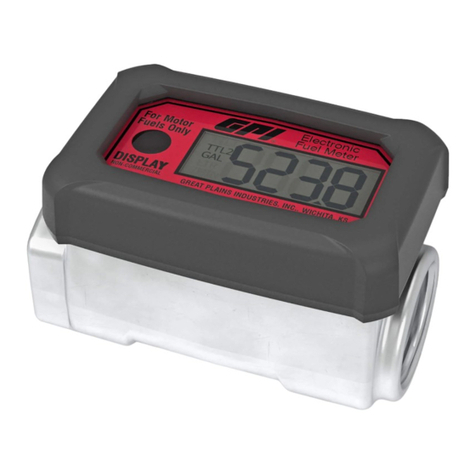
Great Plains Industries, Inc.
Great Plains Industries, Inc. 01A Series User manual

Great Plains Industries, Inc.
Great Plains Industries, Inc. FM-530 Series User manual
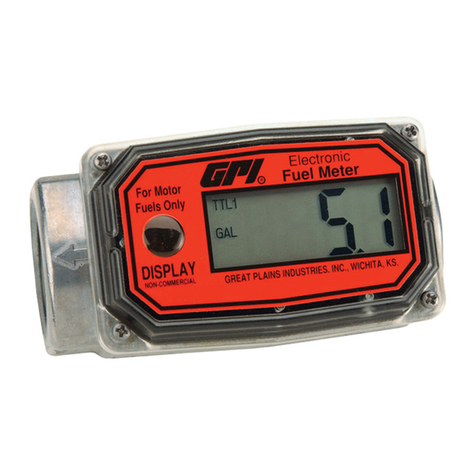
Great Plains Industries, Inc.
Great Plains Industries, Inc. GPI 01A Series User manual
